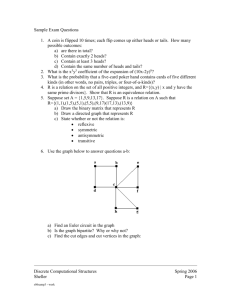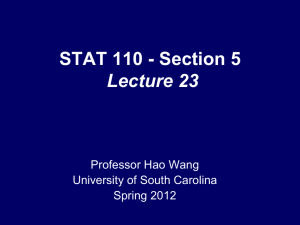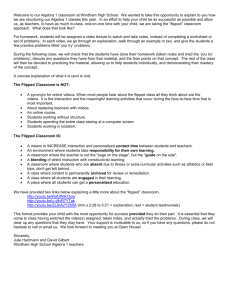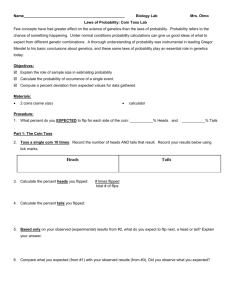HW18
advertisement
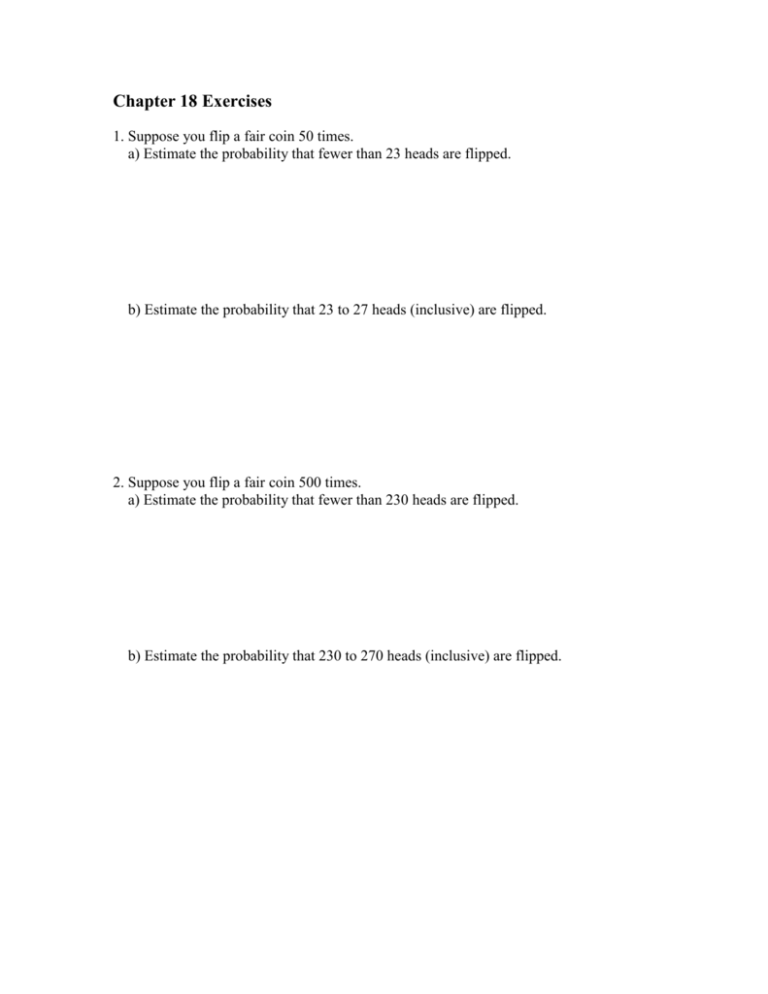
Chapter 18 Exercises 1. Suppose you flip a fair coin 50 times. a) Estimate the probability that fewer than 23 heads are flipped. b) Estimate the probability that 23 to 27 heads (inclusive) are flipped. 2. Suppose you flip a fair coin 500 times. a) Estimate the probability that fewer than 230 heads are flipped. b) Estimate the probability that 230 to 270 heads (inclusive) are flipped. 3. Suppose you flip a fair coin 5,000 times. a) Estimate the probability that fewer than 2,300 heads are flipped. b) Estimate the probability that 2,300 to 2,700 heads (inclusive) are flipped. 4. Explain how your answers from 1b), 2b), and 3b) taken together illustrate the Law of Averages. 5. Suppose you roll a pair of fair 6-sided dice 36 times. a) What is the exact probability of getting six 7’s? b) Use the Central Limit Theorem to approximate the probability of getting six 7’s. (Hint: What range do you need to use on the normal curve to represent 7 to the nearest integer?) 6. Suppose you count the number of aces on 400 die rolls. a) What is the probability that you will get between 60 and 70 aces? b) Suppose I say that for a $1 bet, you will net $4 if you roll an ace and lose your $1 if you don’t roll an ace. If you play 400 times, what is the probability that you will actually come away with more money than you started with? 7. I offer you the following game: we each roll a die, and if you get strictly more than me on your roll, you win $1. Otherwise, you lose $1. a) What is the probability you will at least break even if you play 25 times? b) What is the probability you will at least break even if you play 100 times? 8. You play a game where you draw from a well-shuffled standard deck of cards. If you draw a face card (Jack, Queen, or King), you win $3. Otherwise, you lose $1. If you played this game 100 times, what is the probability that you would lose more than $15? 9. Suppose you play roulette a number of times, each time betting $1 on red (recall that there are 18 slots on a roulette wheel, and a bet on red pays 1 to 1). a) What is the probability of making a net gain in 100 plays? b) What is the probability of making a net gain in 1,000 plays? 10. Suppose you draw from the box 0 1 400 times. a) Approximately what is the probability that the sum of the draws is between 190 and 210 (inclusive)? b) Approximately what is the probability that the product of the draws is nonzero? (Hint: should you be using the Central Limit Theorem here?)


